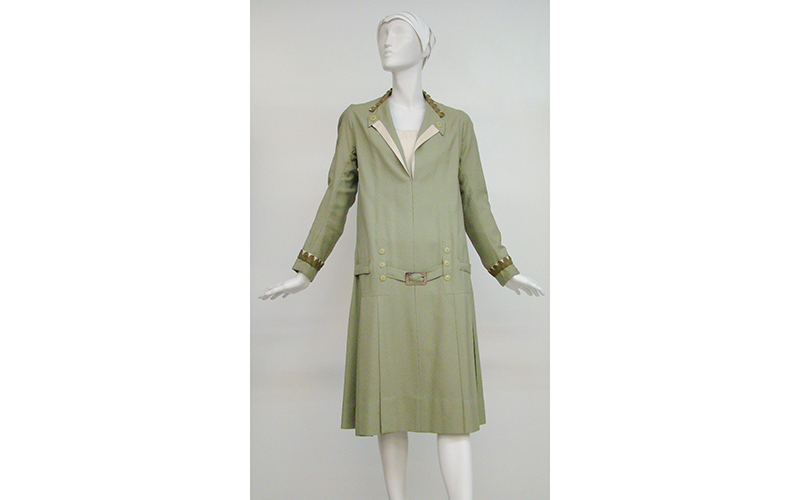- Events & Programs Home
- Calendar
- Accessibility
- Adults
-
Families & Teens
- Families & Teens Home
- 10x10 Teen Art Expo
- Art on the Rise
- Art Together: Art Making for Families with Children Ages 3–5
- Babies Sing with May Festival Minis
- Boy Scouts / Girl Scouts
- CAM Kids Day
- Family Storytime and Gallery Walk
- Family Studio: Art Making for Families with Children Ages 6–12
- Games in the Galleries
- Members-Only Baby Tours
- Public Baby Tours
- REC Reads
- Rosenthal Education Center (REC)
- Saturday Morning Art Class
- See Play Learn Kits
- Summer Camp
- Teen Fest: Zine and Comic Exchange
- RECreate
- Teachers
- Community Outreach
- Fundraisers
- Plan Your Own Event

- Events & Programs Home
- Calendar
- Accessibility
- Adults
-
Families & Teens
- Families & Teens Home
- 10x10 Teen Art Expo
- Art on the Rise
- Art Together: Art Making for Families with Children Ages 3–5
- Babies Sing with May Festival Minis
- Boy Scouts / Girl Scouts
- CAM Kids Day
- Family Storytime and Gallery Walk
- Family Studio: Art Making for Families with Children Ages 6–12
- Games in the Galleries
- Members-Only Baby Tours
- Public Baby Tours
- REC Reads
- Rosenthal Education Center (REC)
- Saturday Morning Art Class
- See Play Learn Kits
- Summer Camp
- Teen Fest: Zine and Comic Exchange
- RECreate
- Teachers
- Community Outreach
- Fundraisers
- Plan Your Own Event
Dress
Dress
- Home
- Plan Your Visit
- Art
-
Events & Programs
- Events & Programs Home
- Calendar
- Accessibility
- Adults
-
Families & Teens
- Families & Teens Home
- 10x10 Teen Art Expo
- Art on the Rise
- Art Together: Art Making for Families with Children Ages 3–5
- Babies Sing with May Festival Minis
- Boy Scouts / Girl Scouts
- CAM Kids Day
- Family Storytime and Gallery Walk
- Family Studio: Art Making for Families with Children Ages 6–12
- Games in the Galleries
- Members-Only Baby Tours
- Public Baby Tours
- REC Reads
- Rosenthal Education Center (REC)
- Saturday Morning Art Class
- See Play Learn Kits
- Summer Camp
- Teen Fest: Zine and Comic Exchange
- RECreate
- Teachers
- Community Outreach
- Fundraisers
- Plan Your Own Event
- Give & Join
- About
- Tickets
- Calendar
- Exhibitions
- Collections
- Blog
- Shop
- Art
- Exhibitions
- What, Me Worry? The Art and Humor of MAD Magazine
- Recall. Reframe. Respond. The Art of Paul Scott
- Rediscovered Treasures
- Special Features
- Upcoming Exhibitions
- Past Exhibitions
- Online Exhibitions
- Explore the Collection
- Provenance and Cultural Property
- Conservation
- Meet the Curators
- Digital Resources
- Art Bridges Cohort Program

Dress , 1925–28, United States (Cincinnati), cotton, silk, plastic, shell, metal, Gift in memory of Adelaide Bieser, 2015.397
Verbal Description
Hello, my name is Eric Le Roy and I am the Associate Director for Docent Learning at the museum. I will be reading the verbal description for the Dress in Unlocking an Art Deco Bedroom by Joseph Urban.
This Dress from 1925-28 is cotton, silk, plastic, shell, and metal. It is from the United States, specifically Cincinnati. It was a gift in memory of Adelaide Bieser. The accession number is 2015.397.
Dress of green cotton herringbone tabby-and-twill weave. It has a standing band collar around neckline of ivory grosgrain with green fabric scallops decorated with metallic embroidery. The band connects to the reverse of the dress fabric and is accented with green plastic buttons and ivory grosgrain. A modesty panel of ribbed ivory silk is attached under the bust neckline with metal snaps. Full-length sleeves with a band of embellished grosgrain at the wrists that terminates into a buttonhole. Top-stitched princess seams run the length of the body with knife pleats below the dropped waist. A self-fabric, continuous loop belt at the drop waist goes through tabs at center and has a shell buckle at front. These tabs extend from the princess seams and are decorated with three small green plastic buttons.
Label Copy
Hello, my name is Eric Le Roy and I am the Associate Director for Docent Learning at the museum. I will be reading the label for the Dress in Unlocking an Art Deco Bedroom by Joseph Urban.
This Dress from 1925-28 is cotton, silk, plastic, shell, and metal. It is from the United States, specifically Cincinnati. It was a gift in memory of Adelaide Bieser. The accession number is 2015.397.
Adelaide Burger Bieser, of Cincinnati, probably made this day dress around the time of her marriage in 1925. Its loose fit and cotton fabric allowed for greater freedom of movement as compared to the structural undergarments and stiffer fabrics of the previous era. Women wore day dresses to run errands, attend college, or work. The metallic embroidery at the collar and cuffs of this dress suggest that it was worn for a fancier daytime occasion.
Cincinnati, OH 45202
Toll Free: 1 (877) 472-4226
Museum Hours
Museum Shop
Terrace Café
Library
Cincinnati Art Museum is supported by the tens of thousands of people who give generously to the annual ArtsWave Campaign, the region's primary source for arts funding.

Free general admission to the Cincinnati Art Museum is made possible by a gift from the Rosenthal Family Foundation. Exhibition pricing may vary. Parking at the Cincinnati Art Museum is free.
Generous support for our extended Thursday hours is provided by Art Bridges Foundation’s Access for All program.

General operating support provided by:



